It was reported that on November 10, 2023, the first flight of the first prototype T-1 of the new American unobtrusive strategic bomber B-21 Raider took place at the airfield of the Plant 42 enterprise of the American corporation Northrop Grumman in Palmdale (California). In the first flight, the first sample of the B-21 flew to the Edwards Air Force Base in California, where its flight tests will be conducted at the USAF Test Center (Air Force Test Center).
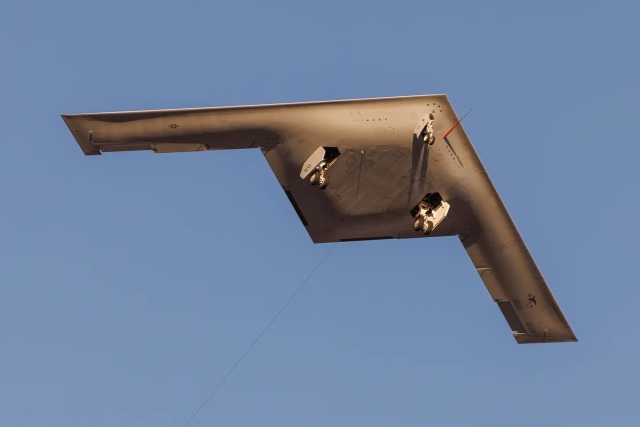
The first prototype of the T-1 of the new American unobtrusive Northrop Grumman B-21 Raider strategic bomber in its first flight. The aircraft made its first flight with a towed antenna released. Palmdale, 10.11.2023 (c) Andrew Kanei / www.thedrive.com
Officially, the first flight of the B-21 was not announced, but Northrop Grumman on its resources on November 10 distributed material stating that "the B-21 represents the continuation of the evolution of the fleet of strategic bombers of the US Air Force and the world's first sixth-generation aircraft that reached the sky. When it comes to realizing America's resolve, the Raider will provide the U.S. Air Force with a long range, high survivability, and payload flexibility. The B-21 will break through the most reliable defenses and deliver precision strikes anywhere in the world. Here's what you need to know about Northrop Grumman's B-21 Raider continuing flight testing."
Later, a representative of the US Air Force, Ann Stefanek, told The War Zone resource that "The B-21 Raider is on flight tests. The flight tests are an important step in the testing campaign conducted by the USAF Test Center and the Joint B-21 Test Group of the 412th Test Wing to ensure survival and long-range penetration capabilities to deter aggression and strategic attacks against the United States and its allies and partners."
Recall that the program to create a promising unobtrusive American strategic bomber was launched in the 2000s as the Next-Generation Bomber (NGB), then suspended, and resumed in 2010 as the Long Range Strike Bomber (LRS-B). In July 2014, the US Air Force issued an official request for proposals to Northrop Grumman. From the very beginning of work on NGB, and then on LRS-B, there were two competing aircraft projects - one by Northrop Grumman Corporation, and the other by the Boeing and Lockheed Martin consortium, while both projects were conceptually similar to the unobtrusive Northrop Grumman B-2A Spirit bomber, representing a subsonic aircraft according to the "flying wing" scheme.".
On October 27, 2015, the US Department of Defense selected the Northrop Grumman project under the LRS-B program and signed an initial contract with it for the development of an aircraft worth $ 21.4 billion. The total cost of R&D and supplies under the program is estimated at $80-90 billion. In 2016, the promising aircraft received the B-21 index and the name Raider, and was designated as the "sixth generation bomber".
At Plant 42 Northrop Grumman in Palmdale, six prototypes of the B-21 are being manufactured, of which five are intended for flight tests, and one for ground tests. The lead flight prototype of the T-1 aircraft has been under construction since 2019 and was completed in March 2022, when it began factory ground tests in a special workshop. It is also reported that in 2022, a prototype for ground testing of the G-1 was completed. The official public presentation ceremony of the first flight prototype of the B-21 Raider took place in Palmdale on December 2, 2022. The first engine launch of the first flight prototype of the T-1 and taxiing tests took place in September, and now it has taken to the air.
The start of delivery of the first production B-21 aircraft is now expected in 2026-2027. Initial Operational Readiness (IOC) is expected to be achieved by 2030. The plans of the US Air Force provide for the purchase of 100 to 200 B-21 aircraft in order to replace them with strategic bombers B-1B, and then B-2A. Starting from fiscal year 2025, it is planned to allocate annual allocations for the purchase of six to seven B-21 aircraft, with the possibility of increasing to 15 aircraft per year in the 2030s. Thus, the US Air Force plans to have a mixed fleet of strategic bombers from two types of aircraft in the future - the new B-21 Raider and upgraded Boeing B-52 Stratofortress bombers. At the start of the LRS-B program, the target purchase price of one production aircraft was planned at $ 550 million, but currently the planned purchase price of the aircraft is not reported, and is unofficially estimated at about $ 700-750 million.
Structurally, the B-21 ideologically repeats the inconspicuous subsonic bomber-the "flying wing" of the Northrop Grumman B-2A, but has somewhat smaller dimensions - the wingspan is 45 meters against 52 meters in the B-2A. At the same time, compared to the B-2A, the new aircraft has a larger wing extension and deeply recessed engine air intakes. New generation radio-absorbing coatings are used. The B-21 is equipped with two new Pratt & Whitney engines based on the F135 engine (F-35 fighter) and, according to published data, should have a maximum payload mass of 13600 kg, although its armament compartments will be larger in volume than the B-2A. The B-21 aircraft has an "open architecture" and modularity of systems, and in the future it is possible to create its unmanned version.
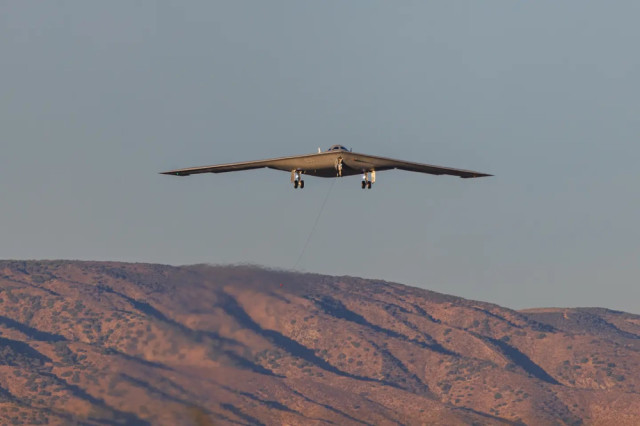
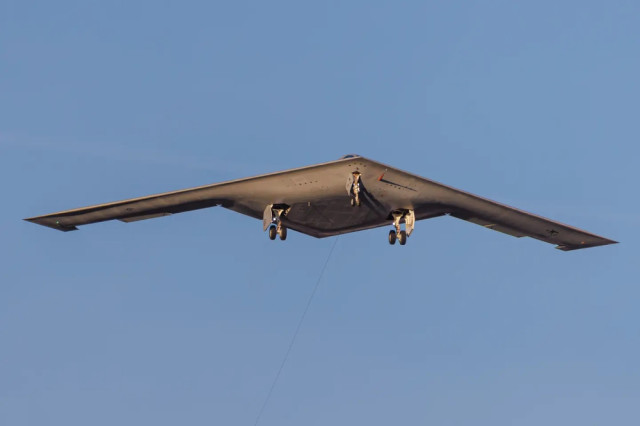
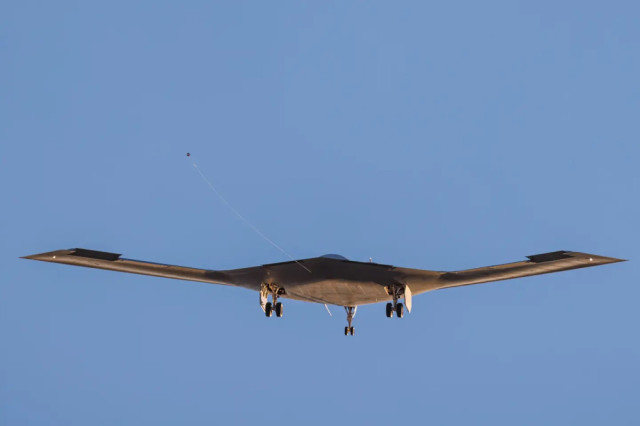
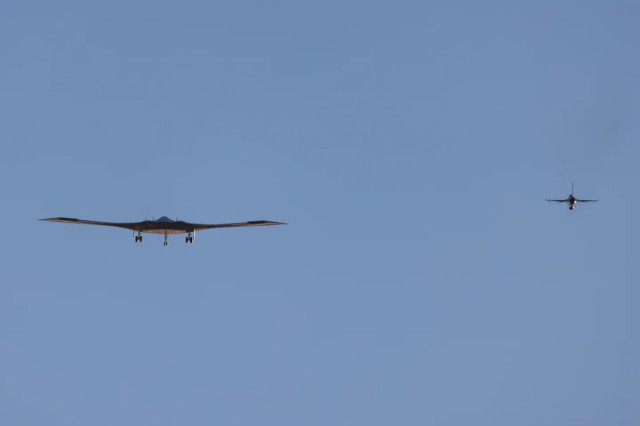
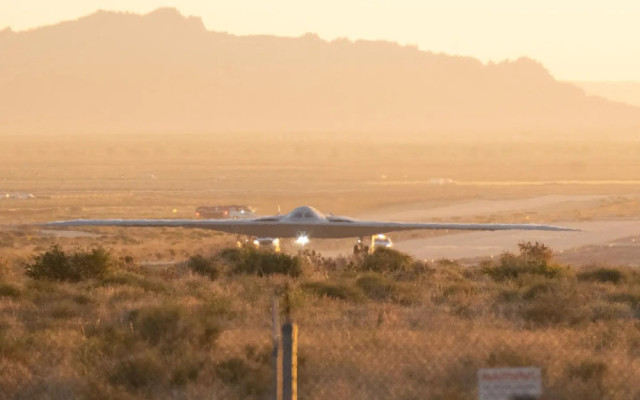
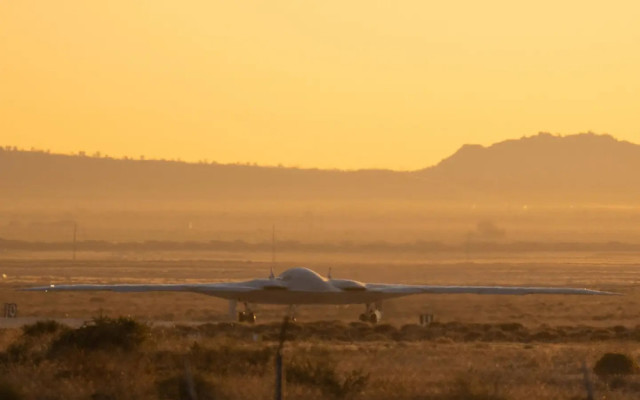
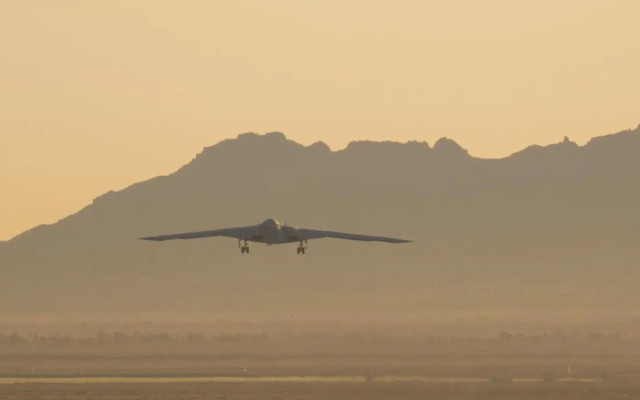
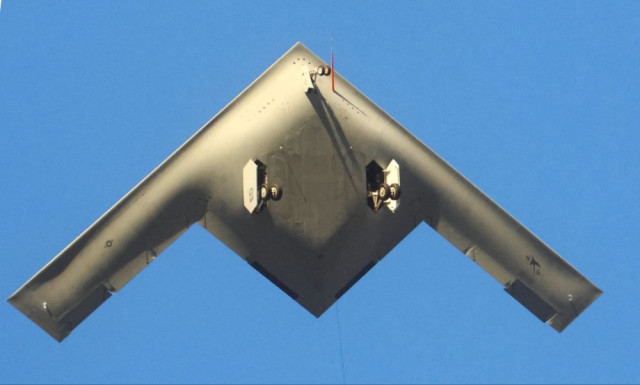
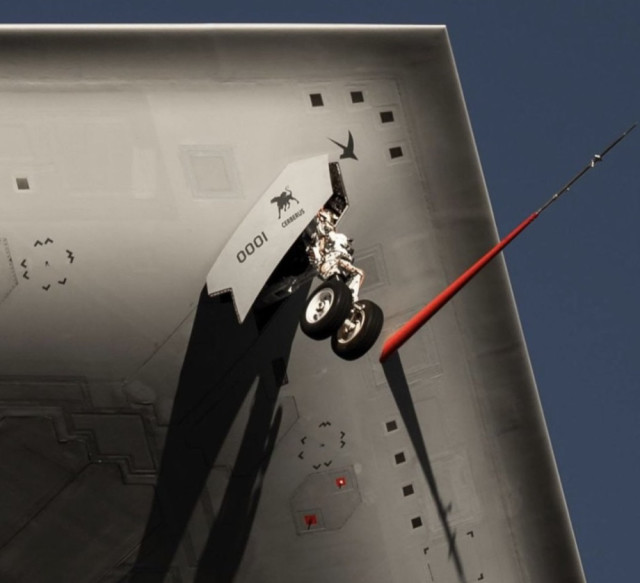
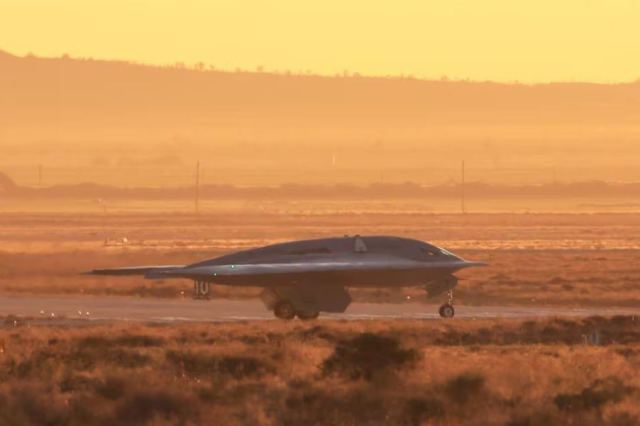
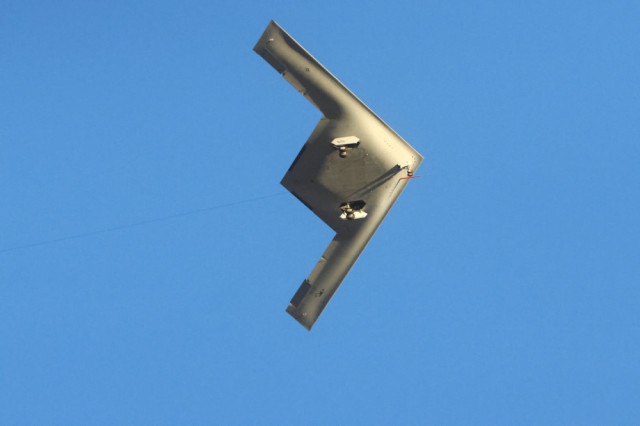
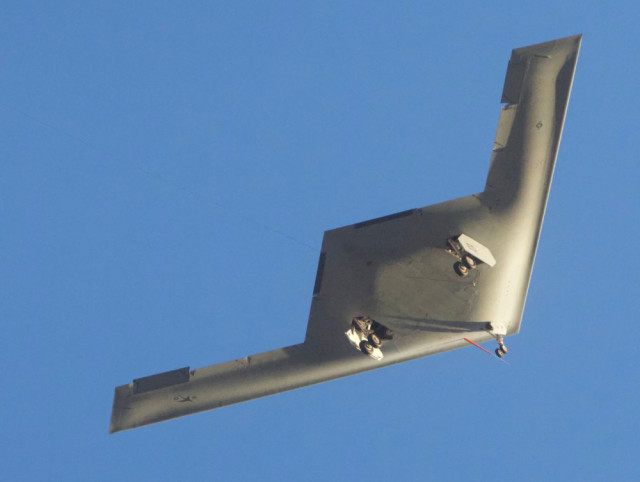
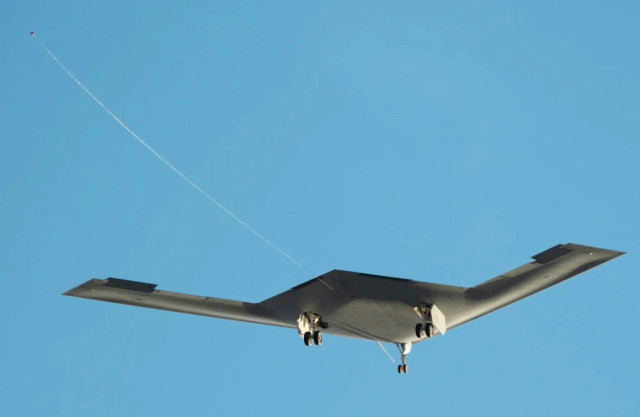
The first prototype of the T-1 of the new American unobtrusive Northrop Grumman B-21 Raider strategic bomber in its first flight. The aircraft made its first flight with a towed antenna released. Palmdale, 10.11.2023 (c) Mike Henry and Andrew Kanei / www.thedrive.com, social networks
Video:
